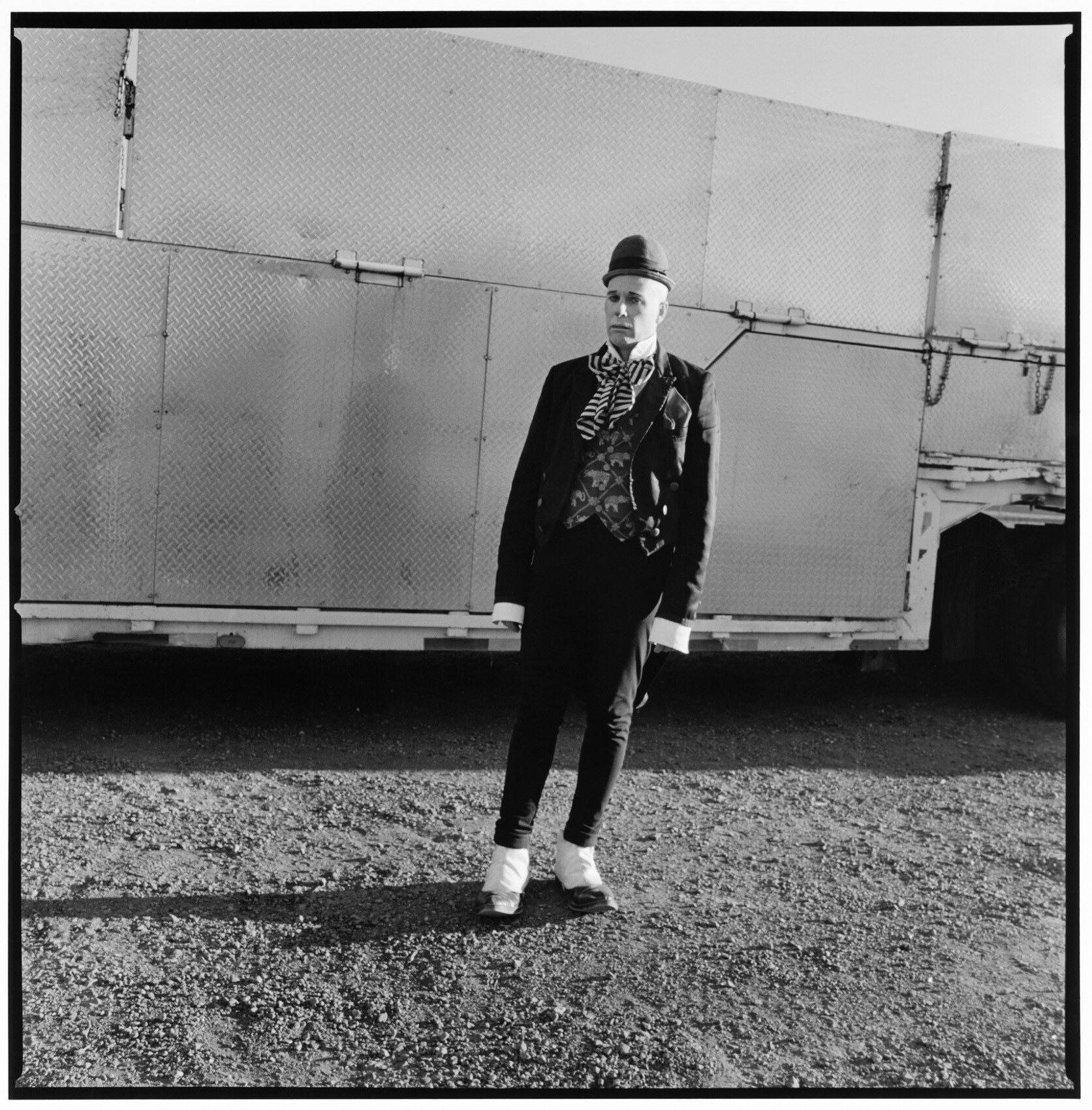A clown takes a smoke break. A trapeze artist checks her makeup in a broken mirror. The quiet moments in Norma I. Quintana’s circus photos seem to be from a different era. The black and white images on medium format film evoke a sense of timelessness.
“I wanted to be able to see images later and not know when I took them,” Quintana says.
Quintana followed the Circus Chimera for 10 summers, from 1998 to 2007, along small towns on the west coast. She took her Hasselblad, lots of film, and in a move that would make even the bravest photographer cower, she left her tripod and flash at home. She never used a digital camera.
Self-taught, Quintana didn’t start pursuing photography until she was in her forties. She’d seen fantastical color photos of the circus that were all bright lights and performance based. She wanted to do something different, quieter.
“I decided not to be intimidated by the fact that there were people before me who had photographed the circus. Let me put my spin on it.”
In a way, Quintana began her photographic journey at the same time as Circus Chimera began its own. The show was in its first season when she approached owner James Judkins about following them for the summer. The costumes were bright and attitudes were optimistic.
Photographing circus performers was difficult at first—it’s tough to get them to stop performing. To capture any real moments, Quintana needed to put in the time. And not “stop by once a week” time, but “follow the circus within a 100-mile radius and spend every waking moment with them” time.
When Quintana first approached people about taking pictures, she knocked on the door of a silver airstream trailer with some samples. The black and white was an instant selling point. “Oooh, black and white, that’s a picture,” they told her. Once she gained the trust of one circus family, more followed.
The circus is like one big family made from smaller actual families, and Quintana was now a member of it. Each group of performers was a real family from a different area of the world. Mothers would swing on the trapeze by evening, and when the spotlights were off, they would take care of their children. Sometimes the children were performers themselves.
“That’s what I want people to know. It’s not about weirdness,” she said. “I saw humanity. I saw family. I saw pride.”
Although not every season had the same people, there were some families that Quintana photographed hundreds of times. They asked her to do birthdays, christenings, all sorts of parties. “She’s family, circus family,” they would tell any newcomers.
Since they were constantly on the road, it was hard for the children to get the care they needed. Quintana would go to the doctor with mothers so their kids could get shots. When the circus was in Napa, where Quintana lived, they would go see the doctors she knew personally. One time she even wrote a letter to the immigration department for a Russian performer.
At first, Quintana’s circus family put a strain on her real family. She had two children and a husband at home while she was on the road. Quintana said they thought she had lost her mind and was actually going to run away with the circus.
“It was hard on them, because all of a sudden I wasnt always there for them,” she said. “Even my friends were like, “what’s going on?””
Quintana’s solution was to incorporate her family as much as she could. Her husband, a physician, would treat the performers when whey came through town, and sometimes she brought her children to the circus with her.
The schedule of the circus dictated Quintana’s life. She processed and edited film in fall and winter, chose images to print by spring, and went back to shooting in the summer. She received a route sheet in the mail until the very end. Her last season shooting was the Circus Chimera’s last season as well.
“We had our journey together,” she said.
All photos from Circus: A Traveling Life, published by Damiani Editore and designed by Yolanda Cuomo.
Copyright © Norma I. Quintana
Books are available for purchase here.










